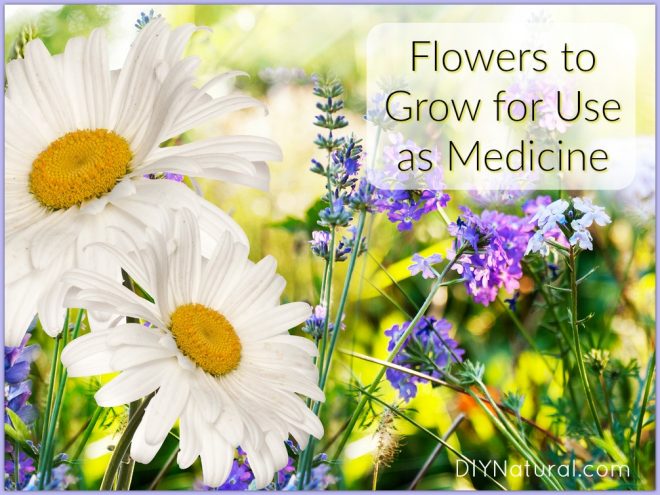
Spring is for flowers. Everywhere you look on our farm there is a different color and they are all vibrating with happy bees doing their work.
Many people are picky about what constitutes beauty in their flowers. So much time and energy is spent hating the beautiful, yellow dandelion, yet I could go on forever about the dandelion’s benefits and the need to preserve them. My yard is filled with yellow right now and we are picking them for meals, bringing them in for bouquets, and even making up a bit of medicine! It put me in mind to talk about the plants we grow specifically as medicinal flowers.
Picking Your Own Medicinal Flowers
Medicinal flowers can mean quite a few things. There is a very specialized medicine form called flower essences that I have written about before and they require a bit more than just picking, eating, or drying the flowers. Today I want to talk about flower medicine where all we are using is the flower itself.
Mullein (Verbascum thapsus)
Mullein flowers will be up in just a few months time. They are found on the flower stalk of the second year plant. These little yellow blossoms are perfect to make into an ear oil for those in your family who struggle with painful infections.
Chrysanthemum (Chrysanthemum morifolium)
In Traditional Chinese Medicine, mums are important for eye health, colds, and fevers. These small white and yellow blooms show up in the fall and can be picked almost daily while they last. They can be used fresh or dry.
Lavender (Lavendula angustifolia)
It is the lavender bud, picked just as it is opening, that is used in Western herbalism. They can be a bit bitter (so don’t add too much to a tea), but they are perfect to help soothe nerves, calm anxiety, or quiet a headache.
Rose (Rosa rugosa)
My favorite job here on the farm starts at the end of May and lasts into the first week of June. Picking the roses daily, I learn first hand how they relax the nervous system, lift the spirits, and make your heart sing. Topically, we use them in a lot of our favorite skin care recipes and the astringency, combined with their emollient quality, make them perfect for recapturing youth! (You can make homemade rose water to be used in a number of skin care recipes!)
Chamomile (Matricaria recutita)
Of course it’s the chamomile bloom that we use to make that most famous of all relaxation teas. The sunny, white and yellow chamomile flowers must be picked every day. They are delicate and need to be dried quickly. A taste of chamomile can relax the nervous system, help us sleep, or calm an upset stomach. (If you can’t find them near you, purchase the dried flower here.)
Linden (Tilia americana)
This common tree is all over our American cityscapes. This is a common street tree and will bloom in just a couple months. The flowers have a sedative action in the nervous system and are used around the world in tea for the cold and flu.
Mimosa (Albizia julibrissin)
Many people use the bark of the mimosa tree to calm agitation, stress, or anxiety – but we don’t need to get out any special tools to benefit from this plant. The Dr. Seussian pink flowers can easily be picked to give the same effect!
Hibiscus (Hibiscus sabdariffa)
The teas made from this flower are best known for their distinctive color. The tropical red hibiscus flower, when dried adds a deep pink to any tea it graces. If pink and red remind us of love and the heart, this is appropriate. Hibiscus is very good for our circulatory system and studies have shown the flower is effective at improving our cholesterol and blood pressure numbers.
Honeysuckle (Lonicera japonica)
There is a lot of money being tossed about in an effort to eradicate this aggressive plant. The silver lining is that we can harvest the flowers and use them for the immune supportive actions in the body. In Traditional Chinese Medicine these flowers are highly prized and are called Jin yin hua.
Looking for more inspiration and ideas for using flowers and plants as medicine?
DIY Natural recommends these great reads:
- Rosemary Gladstar’s Medicinal Herbs: A Beginner’s Guide
- Heal Local: 20 Essential Herbs for Do-it-Yourself Home Healthcare
*******




Hi,
This is a great recipe.
I am in the middle of making this recipie and I have let that ganash set for about an hour and 10 minutes and the outside is hardened to a good consistency but the middle is very soft and it is not hardening and it is staying soft. is anything I can do make the middle of good consistency?